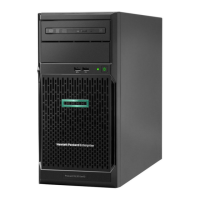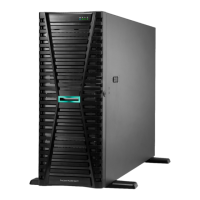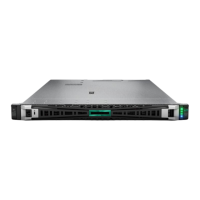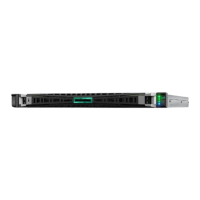• Enabled
• Disabled
3. Save your setting.
Enabling or disabling Memory Fast Training
Use the Memory Fast Training option to configure memory training on server reboots. When enabled,
the platform uses the previously saved memory training parameters determined from the last cold boot of
the server, which improves server boot time. When installed on your server, and this setting is enabled,
NVDIMM-N Memory contents are left undisturbed during warm resets. If Memory Fast Training is
disabled, each warm reset is upgraded to a cold reset and results in an NVDIMM-N backup and restore.
Hewlett Packard Enterprise recommends that you leave Memory Fast Training enabled.
Procedure
1. From the System Utilities screen, select System Configuration > BIOS/Platform Configuration
(RBSU) > System Options > Boot Time Optimizations > Memory Fast Training.
2. Select a setting.
• Enabled—Enables the server to use previously saved memory training parameters.
• Disabled—The platform performs a full memory training on every server reboot.
3. Save your setting.
Setting the UEFI POST Discovery Mode
Use the UEFI POST Discovery Mode option to control how the system loads UEFI device drivers.
Procedure
1. From the System Utilities screen, select System Configuration > BIOS/Platform Configuration
(RBSU) > System Options > Boot Time Optimizations > UEFI POST Discovery Mode.
2. Select one of the following:
• Auto—The system only loads the UEFI device drivers that are required for booting the devices in
the UEFI Boot Order list.
• Force Full Discovery—The system loads the UEFI drivers for all devices, making all boot targets
available.
NOTE: This setting might significantly increase boot time.
• Force Fast Discovery—The system starts the fewest number of devices as possible to increase
boot time.
NOTE: Some devices that do not support Fast Discovery might not work properly.
3. Save your setting.
54 Enabling or disabling Memory Fast Training

